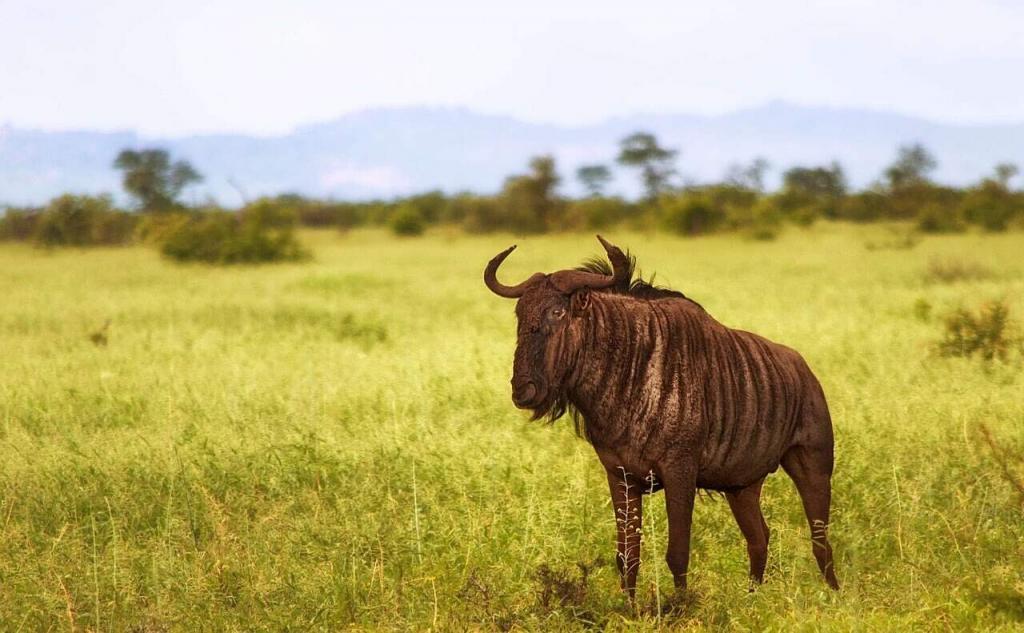
What Month Is Best To See The Wildebeest Migration?
The Wildebeest Migration is one of the world’s most iconic wildlife spectacles. Millions of hooved beasties make their annual journey from Tanzania’s Serengeti National Park to Kenya’s Masai Mara region.
The wildebeest migration in Serengeti is an incredible spectacle. Millions of wildebeest, zebras, and gazelles make their annual round trip from Tanzania to Kenya every year.
Experience an iconic safari event that continues to captivate the hearts of travellers around the globe. Catch a river crossing or witness 500,000 newborn wildebeest calves take their first steps – this is your chance to witness one of nature’s most extraordinary feats!
Where to See the Wildebeest Migration
The Wildebeest Migration is one of the world’s most spectacular wildlife events. It takes place annually between Serengeti National Park in Tanzania and Masai Mara National Reserve in Kenya, Serengeti National Park, and Serengeti National Park, respectively.
January to March: The Calving Season
From late December to February, herds of wildebeest graze on short green grasses in the southern Serengeti. During this period, many calves are born daily – up to 8,000 calves are born daily during February! Watching these precocious little ones as they run around on unsteady legs makes for exciting viewing for predators like lions, leopards and cheetahs as they make easy prey for lions, leopards and cheetahs which hunt them down easily.
April to May: The Green Season
In the early months of this period, herds migrate northwest toward greener grass in central Serengeti. Their numbers are greatly enhanced by calves born in February and March – when male wildebeest engage in ‘the rut’ – testosterone-fueled battles that lead to mating and the birth of thousands of young.
From April to June, wildebeest migrate south into the central Serengeti. Some pass through Namiri Plains – famous for cheetah sightings – while others cross to western Serengeti and move north, crossing Grumeti River at Ngorongoro Crater – one of Tanzania’s lesser-known parks with great game drives available.
May to mid-July: The Western Corridor
As the Western Corridor’s short grass plains become depleted, herds of bison move towards Lake Victoria for more reliable water sources. This is also mating season, so tourists should expect testosterone-fueled battles between males and females.
It is an ideal time to observe herds of giraffes, ostrich, kudu, and hyenas, as well as lion, leopard, and cheetah hunting wildebeest calves.
On a dry year, the first herds may cross the Mara River as early as July; on wetter occasions, they may arrive as late as mid-August. No matter when they occur, river crossings remain one of nature’s most thrilling wildlife moments and should not be missed by anyone wanting to witness The Great Migration in all its splendour.
July to September: River-Crossing Season
By July, the migration is underway as herds move north from Moru Kopjes towards the Western Corridor, often splitting up along the way. Eventually, some of these herds reach the Grumeti River, where they face their first major obstacle: crocodile-infested waters.
The Grumeti River isn’t the only obstacle in their way: many predators lie ahead. Lions and cheetahs are especially common in this part of the Serengeti.
If you’re travelling during this period, Klein’s Camp or Namiri Plains offer excellent game-viewing opportunities. These camps are situated to witness the wildebeest migration from Kenya to Tanzania.
Experience the first river crossings of the year during Bologonja Spring and Makutano in July each year.
September – November: The Maasai Mara
This is an ideal time of year to view the migration as the weather is dry and days are warm, making wildlife viewing easier than in July or August. However, be aware that it’s also a popular time to visit Masai Mara; prices tend to go up, and sightings may become more crowded.
At night, the herds remain scattered across Mara’s vast plains; however, they come together for safety and security. You may also spot them grazing in small groups during the daytime, which provides excellent game-viewing opportunities from Mara lodges and camps.
November – December: Low Season
During the Low Season, wildebeest migrate between locations in Tanzania and Kenya. This period is more dispersed than during prime migration times of July-October or December-March.
In November, the short rains of the Serengeti begin to green up its grass plains and draw herds to graze. Behold long trains of wildebeest – sometimes containing hundreds of thousands of animals – joined by zebras and Thomson’s or Grant’s gazelles as they funnel up through central and western Serengeti.
Experience awe-inspiring long columns of herds during your safari in Serengeti National Park. You can observe these incredible migratory flocks from mobile camps and lodges near the Ndutu area of the Serengeti; however, be aware that flies may be an issue during this period.
Click here to read if The Wildebeest Migration Happening Now?

